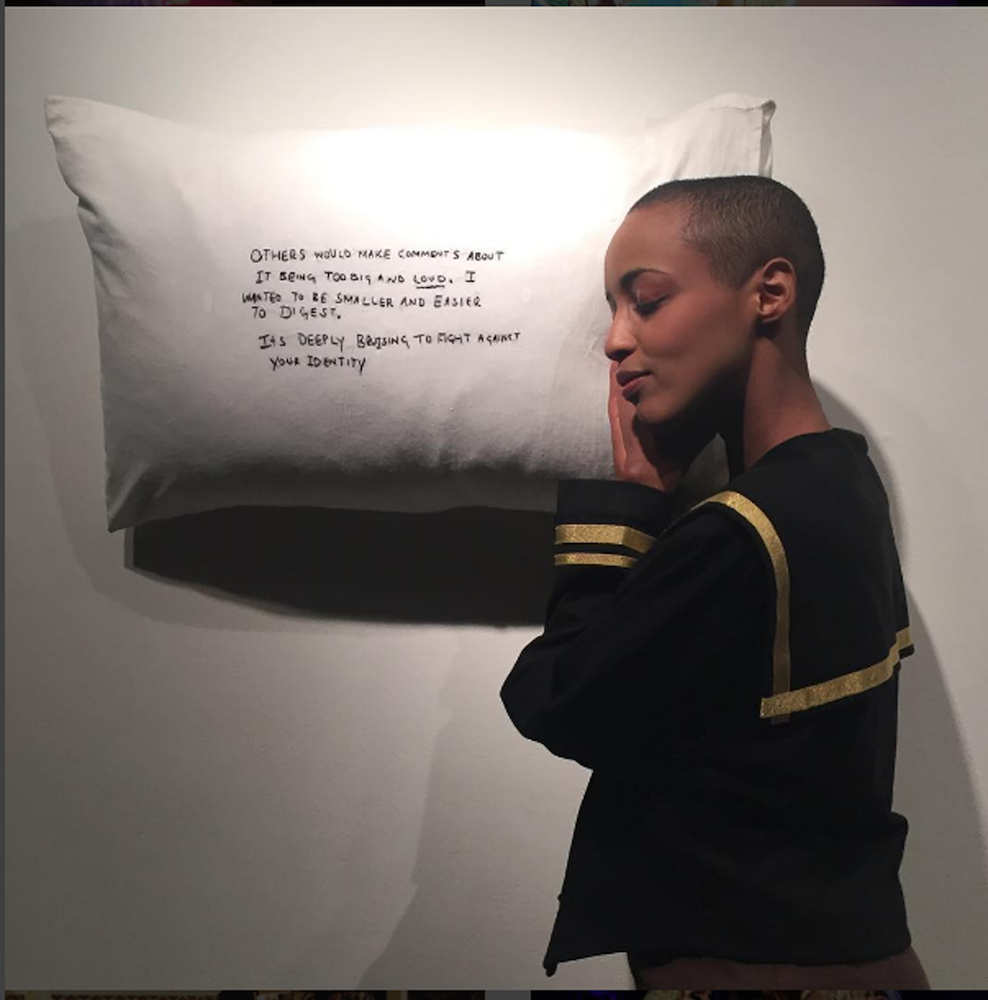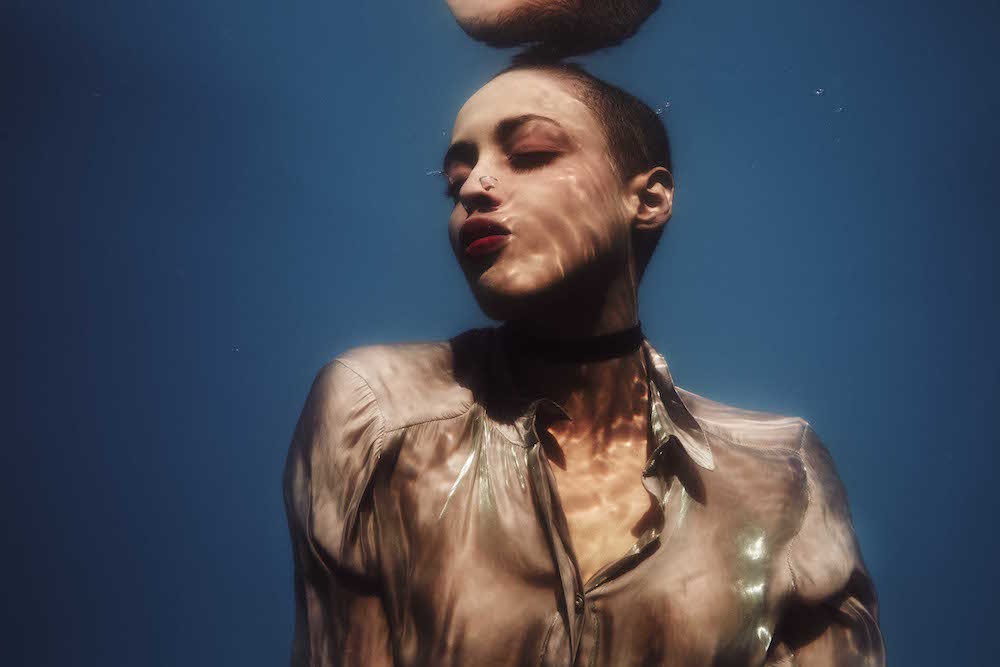i-D Hair Week is an exploration of how our hairstyles start conversations about identity, culture and the times we live in.
“It’s deeply bruising to fight against your identity,” 30-year-old artist Diana Chire wrote in the statement accompanying her work Hair Manifesto, shown as part of a group exhibition earlier this year. It was a continuation of a performance that began when, in 2016, Diana invited a group of friends to her studio to watch her shave her head, getting rid of the weaves she had been having done for decades. The experience was majorly freeing for the artist, whose work is centered on her own body as a medium. “When I looked in the mirror I was like, Wow this is who I am, this is me, I just felt like I was walking differently and I was making decisions and there was this confidence that I hadn’t had before.” She kept the hair, and for a while was unsure what to do with it, until she found the right resting place, embroidering the weave onto pillowcases, spelling out sentences from her studio diary of the 30 days leading up to shaving her head, in which she reflected on how her hair had come to inform, and also keep her detached from, her sense of self.

For a long time it had been such a loaded part of Diana’s identity. She remembers a kid being made to feel her natural hair wasn’t good hair. “People would be like, ‘it’s too big, it gets in the way, I can’t see anything.’ And so you’re trying to flatten it, you go to the back of the class. You begin to feel like you have to subscribe to what other people want you to, which is why I think I started relaxing my hair. I didn’t want other people to touch my hair, it made me feel like a freak.”
Born in Egypt to parents from Ethiopia, Diana was raised in London from the age of 5. While at university she began experimenting with performance art, and though it increasingly came to revolve around her own identity, she held back from work that touched on race. “I think I was always a bit scared to do anything that was too racial, because I’d always be the only person of color in the class and sometimes if you make work about things like that, people don’t get it.” After leaving university and becoming more sure of herself and her art, Diana’s medium became her own body, and so her experience as a woman of color was fundamental to her explorations.
After decades of getting hair weaves, Diana faced up to the anxiety it induced, feeling like it always needed to be it ‘done’, to be fixed, that her hair in its natural state couldn’t be beautiful. The more her work became anchored in her physical state, the more she began to feel she needed to strip away the hair that wasn’t hers. “I was just sick and tired of having fake hair, and doing all this work about being completely connected with myself and true to myself and just felt kind of fraudulent.”

Currently working towards a performance piece in September, the artist is preparing to slip into different skin, literally. She’s making fleshy latex moulds of her feet, face and hands, for a work that will dig into the use of skin lightening products among women of color. “Whenever I would go to buy hair extensions they would always have skin lightening products for sale. In Ethiopia I know that they have adverts featuring white women — in a predominantly black country.”
Shaving her head was liberating, but it came with limitations as her hair, or lack of, remained a focus. “I loved not having any hair, but the thing about having a shaved head was that all anybody did was talk about my shaved head.” She’s now growing her hair out, liking the texture of her own hair and looking forward to having an afro, no longer worrying about it being big and untamed. While her hair is in this in-between stage, Diana’s been playing around with wearing wigs. That has led to people around her to say she’s going against everything her shaved head stood for. “That performance is still there and is still connected to my practice and who I am, but me just temporarily wearing a wig doesn’t mean I’m going back on everything,” she says. A wig is another experiment? “It’s like performing, I’m wearing a wig and I’m this person. It’s just another persona.” When she finally grows in her fro, it’s sure to elicit a different kind of˚attention. Diana’s hair as performance plays out the hypocrisy and politics so entwined with appearance for women of color. But taking control of her own hair has given the artist a way to connect with a part of her identity she’d felt at odds with for so many years. “When my hair started growing out again it was the first time I’d felt the actual texture of my hair, because I’d been relaxing it from such a long age. I was like, This is what my hair feels like! Ok, this is cool.“
Credits
Text Clementine de Pressigny
Images courtesy Diana Chire
